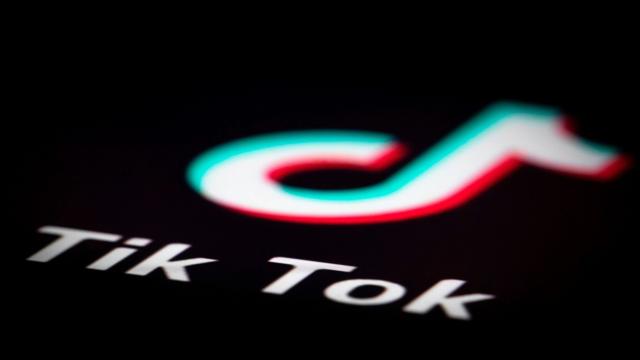After getting chewed out by U.S. government agencies, lawmakers, and more than a few parents, TikTok is finally giving us a window into the ways it targets, tracks and moderates all of the teens and tweens on its platform.
Today, the Chinese-owned company announced in a blog post that it would soon be rolling out an official “TikTok Transparency Centre” in the company’s California HQ starting this coming May. Per the company, this new wing will give “outside experts” a window into the company’s day-to-day processes employed by the moderators tasked with overseeing the roughly 500 million global users logging onto TikTok for memes and more.
“Through this direct observation of our Trust & Safety practices, experts will get a chance to evaluate our moderation systems, processes and policies in a holistic manner,” said the company’s general manager for American operations, Vanessa Pappas in the statement. Per Pappas, this includes:
– how [TikTok’s] trained content moderators apply those Guidelines to review the technology-based actions that are escalated to them, and to identify additional potential violations that the technology may miss;
– how users and creators are able to bring concerns to our attention and how those are handled;
– ultimately, how the content that is allowed on the platform aligns with [TikTok’s] Guidelines.
It’s not hard to see where the rationale behind the rollout came from. Over the past year, the potential state-run censorship under the company’s Beijing-based ownership of the media giant Bytedance has been continually called into question. As Reuters reported this past October, U.S. Senator Marco Rubio demanded a national security review of the platform arguing that TikTok is being used to censor “topics deemed sensitive by the Chinese Government and Communist Party.” These suspicions have led the company to quietly start scoping out a potential CEO for the company’s American operations this past January, before making the announcement about the new Transparency Centre today.
To be fair, these aren’t the only moves that the company’s made in the realm of keeping its teenage base safe, as Pappas pointed out in her blog. At the start of this year, TikTok gave its community guidelines an overhaul and the rollout of the company’s first-ever biannual transparency report.
While this centre’s early efforts will focus on the content-moderation side of the company, Pappas explained that over time, this centre will expand to include “insight into our source code,” and the company’s efforts around “data privacy and security,” which will be spearheaded by the company’s newly hired Chief Information Security Officer, Roland Cloutier.
As with all the great social media platforms of our time, it’s worth keeping in mind that privacy and security are very, very different things. TikTok’s recent move to patch up a major vulnerability in its platform—one that allowed hackers to take over random accounts on the platform—was a move to beef up the platform’s security, not its privacy.
And TikTok’s privacy—and data usage in general—is something that we still know shockingly little about. Save for a closed-off platform that’s currently open to “select partners,” TikTok is still pretty quiet about its ad-serving and data-targeting tech in the US. Recently, Reddit CEO Steve Huffman called out some of these practices and his own concerns over the way the TikTok app “fingerprints” its users, citing the practice as nothing short of parasitic.
While the company stresses that its US operations are separate from its operations anywhere else, it’s worth noting that the terms for its ad platform are pretty similar, regardless of whether or not the ads are being targeted by an entity in America or an entity in Taiwan. It’s also notable that recently, TikTok’s parent company, Bytedance, has slowly been building out a massive targeting and tracking apparatus for TikTok’s East Asian base, without disclosing too many of these efforts to a Western audience.
This past summer, for example, Adweek first broke the news that the company was teasing a way to target uses across various apps based on their on-TikTok behaviour, similar to the way platforms like Facebook and Twitter target users here in the US. Since that story first broke, the company pulled its original developer documentation for this ad targeting tech, with the page that formerly disclosed it now redirecting to a 404. As of 2020, that tech’s re-emerged as a new platform, called “Pangle,” which, according to Bytedance’s own estimates, has targeted and tracked more than 700 million daily active users.
If those cross-country shenanigans weren’t enough, keep in mind that the majority of news about Pangle—and Bytedance’s ad-targeting tech in general—doesn’t come from the company’s Beijing headquarters, but from Japan. And that’s not even touching the company’s branch in India, where it’s estimated to pull in a healthy $US13.5 ($21) million through advertising alone by this coming September.
In a nutshell, this company is rapidly expanding around the world and all the while adding more layers of opacity.
I don’t doubt that TikTok’s Transparency Centre will ultimately shed a bit of light onto some of these practices. But because the chain of command in the way data is tracked and targeted is so convoluted—and because the relationship between TikTok’s international branches is so underreported—some of the most crucial questions about this company will go unanswered, the way questions about invasive platforms often do. Maybe before we start addressing some of these concerns about “transparency,” it’d be helpful to address what we talk about when we talk about “transparency” at all.
